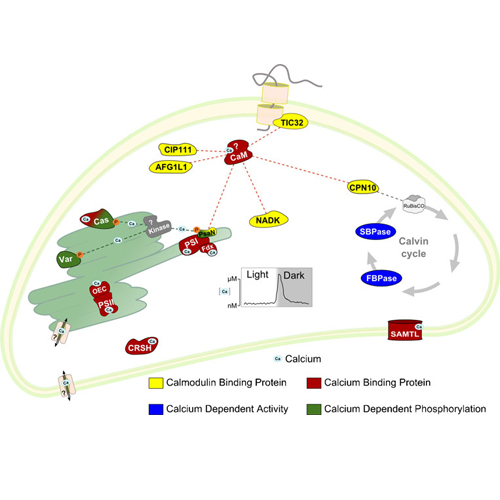The role of calcium in chloroplasts—an intriguing and unresolved puzzle
08-Jan-2012
Protoplasma, 2012, DOI 10.1007/s00709-011-0373-3, published on 08.01.2012
Protoplasma, online article
Protoplasma, online article
More than 70 years of studies have indicated that chloroplasts contain a significant amount of calcium, are a potential storage compartment for this ion, and might themselves be prone to calcium regulation. Many of these studies have been performed on the photosynthetic light reaction as well as CO2 fixation via the Calvin–Benson–Bassham cycle, and they showed that calcium is required in several steps of these processes. Further studies have indicated that calcium is involved in other chloroplast functions that are not directly related to photosynthesis and that there is a calcium-dependent regulation similar to cytoplasmic calcium signal transduction. Nevertheless, the precise role that calcium has as a functional and regulatory component of chloroplast processes remains enigmatic. Calcium concentrations in different chloroplast subcompartments have been measured, but the extent and direction of intra-plastidal calcium fluxes or calcium transport into and from the cytosol are not yet very well understood. In this review we want to give an overview over the current knowledge on the relationship between chloroplasts and calcium and discuss questions that need to be addressed in future research.











